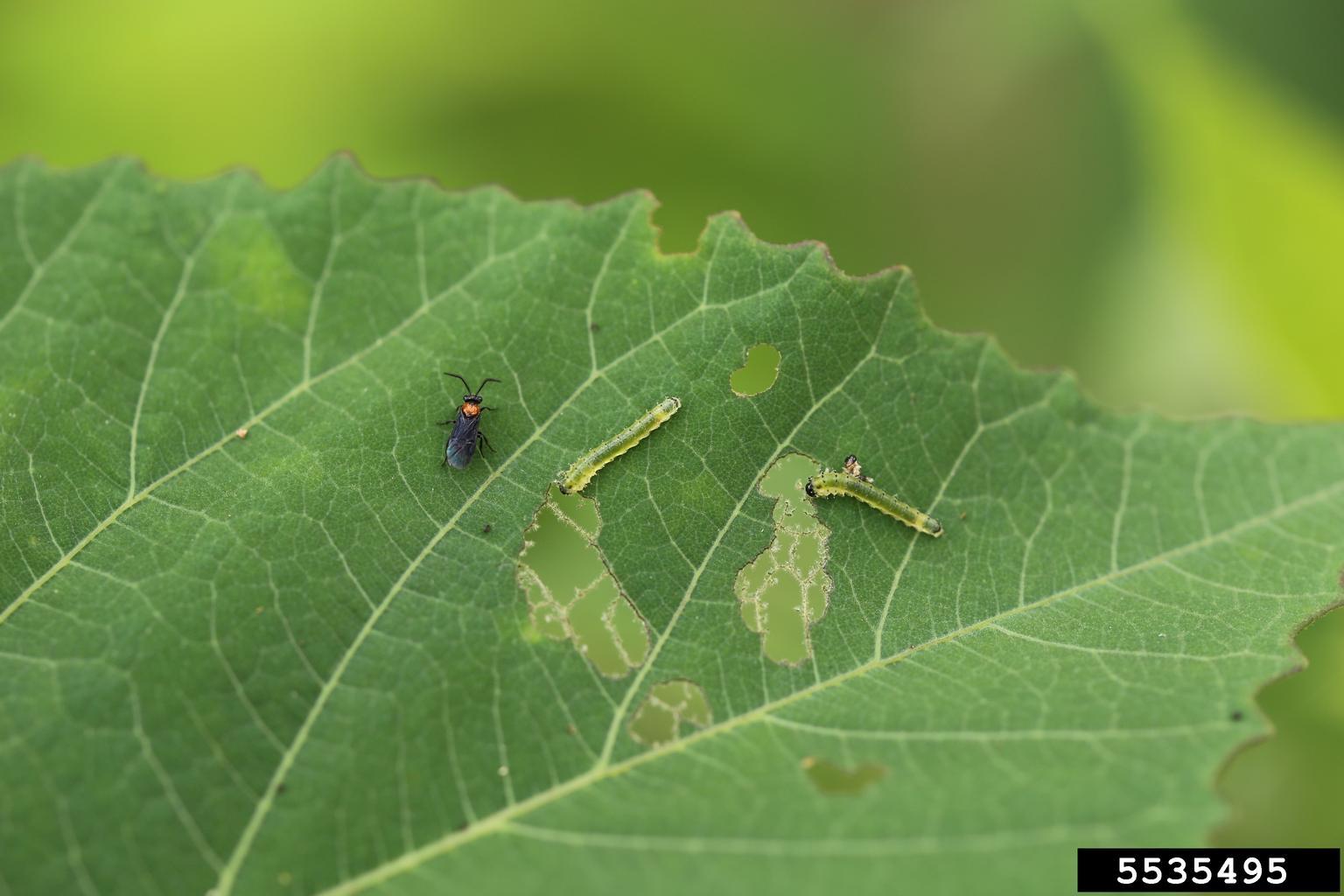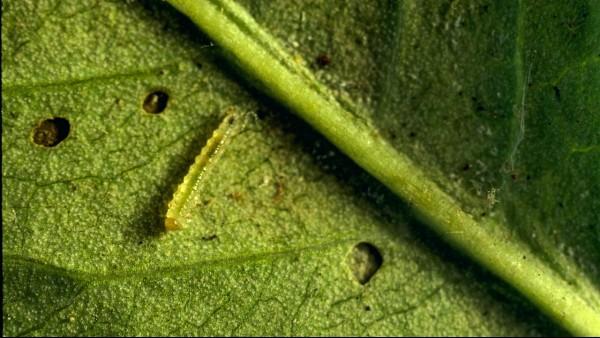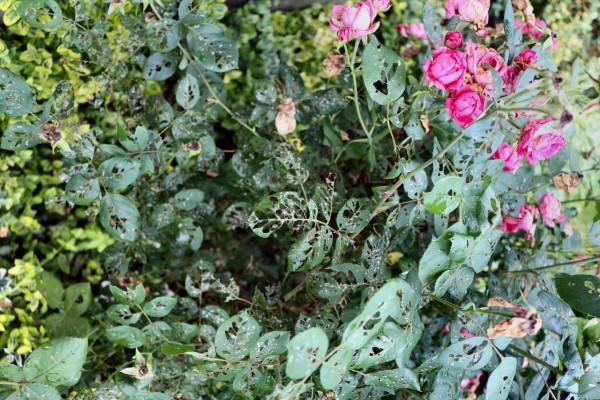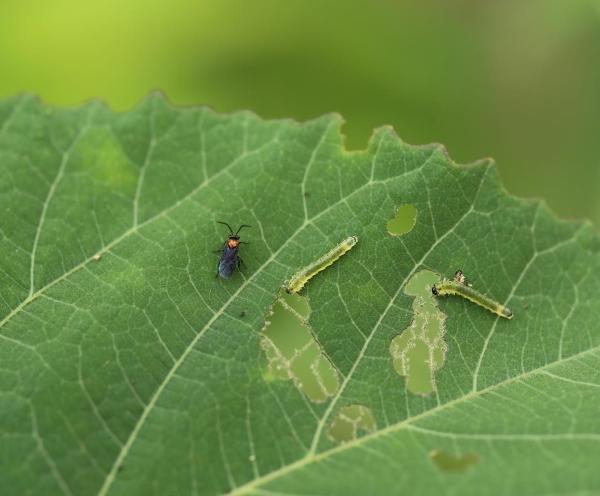Sawfly insects chew leaves
Sawflies look like caterpillars but they are a different type of insect. Sawflies are related to bees, wasps, and ants (in the order Hymenoptera). They go through four stages in their life cycle – egg, larva, pupa, and adult. The larvae look similar to caterpillars or, in some cases, tiny worms. Sawfly larvae have more than 5 pairs of prolegs on their abdomen, which helps to distinguish them from caterpillars.
Sawflies often have shiny red or blackheads and the bodies often have black spots or stripes. They are usually 1 to 2 inches long. They like to feed in groups and many may be found together on a branch. Damage may appear as small chewed spots on leaves to complete defoliation of individual branches or shoots. In Maryland gardens, sawflies are most often seen chewing on roses, hibiscus, dogwood, columbine, birch, and pine. There are multiple species that affect different plants.
Management of sawflies
In general, sawflies are best controlled when they are young larvae. Monitor your plants regularly for symptoms of chewing damage. You can simply pick off sawfly larvae by hand and drop them into a container of soapy water to kill them. A forceful spray of water can knock small sawflies off of a plant; the dislodged insects cannot climb back onto the plant. Heavy infestations of young larvae also may be sprayed with horticultural oil or spinosad.
Remember: Even though sawflies look like caterpillars, they are not. A biological pesticide used to control caterpillars, Bacillus thuringiensis (Bt), will not control sawflies since they are a different type of insect.





